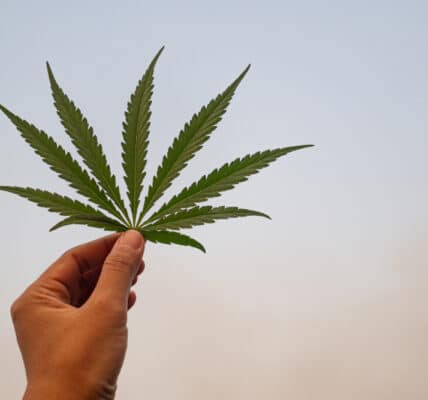THC to Pass Alcohol to Become America’s Drug of Choice

A massive new article in Vox chronicles the ascent of THC products in America. Vox senior correspondent Marin Cogan cites a Carnegie Mellon University study showing that in 2022, “more Americans were using marijuana daily, or almost daily, than consuming alcohol.”
From less than one million daily users in 1992, the number of Americans using marijuana daily in 2022 was estimated at 17.7 million. That’s about 5% of the total U.S. population. According to the National Institute on Alcohol Abuse and Alcoholism, 28.9 million people aged 12 and over reported alcohol use disorder (AUD) in 2023. That’s about 8% of the total U.S. population. So it looks like THC has a ways to go before it eclipses daily drinking in the United States.
THC products are being marketed as a safer alternative to recreational drinking. They are sold as more “natural,” even though there is nothing natural at all about vaping a THC concentrate. They are marketed as relieving stress, reducing nausea and pain, and helping with sleep.
However, very little scientific research has been done on the long-term effects of consuming THC. This is due mostly to the fact that marijuana is still categorized as a Schedule I drug by the U.S. federal government, making research problematic. The result, according to Vox:
[…] means millions of daily users are essentially conducting a real-time experiment on their own bodies.
The idea that THC use is harmless is contradicted by the facts. The Drug Enforcement Administration (DEA) has found that the THC content in seized marijuana has gone up more than threefold in the past 25 years, from 5% to more than 15%. The higher concentrations of THC combined with daily use are leading to a number of health problems, including:
- cannabinoid hyperemesis syndrome
- greater risk of stroke and cardiovascular disease
- development of psychotic disorders including schizophrenia
- dysfunctional dopamine response
- damage to the brain’s reward systems
Marijuana is now legal for medicinal purposes in 39 states, and for recreational purposes in 24 states. However, as a Schedule I drug, marijuana is considered to have “no medical benefits” under federal law. The Biden administration has proposed reclassifying weed as a Schedule III drug, which would make it much easier to do research on THC.
In 2022, the U.S. Congress passed the Medical Marijuana and Cannabidiol Research Expansion Act, which liberalizes the rules for marijuana research. However, much of the law has not yet been implemented and it is expected to take years to set up the oversight and registration procedures the law requires.
Despite having a reputation as being non-habit-forming, people can become addicted to THC products and often need professional help to break their addiction. AddictionNews writer Katie McCaskey put together a wonderful set of pointers and suggestions for people trying to reduce THC consumption.
Written by Steve O’Keefe. First published December 11, 2024.
Sources:
“How weed won over America,” Vox, December 3, 2024.
“Alcohol Use Disorder (AUD) in the United States: Age Groups and Demographic Characteristics,” National Institute on Alcohol Abuse and Alcoholism, September 2024.
Image courtesy of Pix4Free, used under Creative Commons license.

